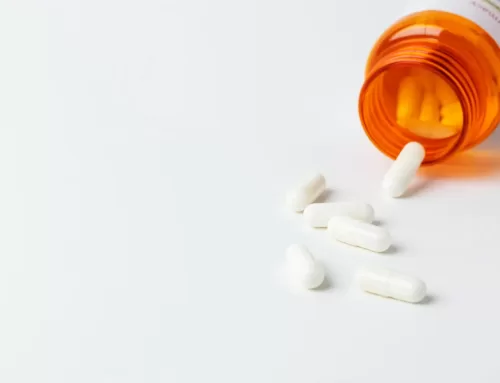
How Peer Pressure Shapes Early Drug Habits and How Outpatient Recovery Curbs Teen Substance Abuse
Peer pressure drives adolescents toward drug experimentation by normalizing substance use within social circles, encouraging conformity to group norms and early habit formation. When teens perceive substance use as a pathway to acceptance, they internalize risky behaviors and may begin experimenting before fully understanding the consequences.
This article examines how peer influence initiates early drug habits, outlines the structure and advantages of outpatient recovery programs, details strategies for prevention and relapse avoidance, explores family support’s pivotal role, and guides families in finding “outpatient recovery near me” for tailored adolescent care.
How Does Peer Pressure Influence Early Drug Habits in Teens?
Peer pressure influences early drug habits by aligning adolescents’ desire for social belonging with risky behaviors that feel rewarding in the moment. Adolescents experience Peer Pressure as a behavioral aspect that increases susceptibility to substance use through modeling and reinforcement.
The Impact of Peer Influence on Adolescent Substance Use
Research indicates that adolescents are highly susceptible to peer influence, which can significantly impact their likelihood of experimenting with and developing substance use habits. This influence often stems from a desire for social acceptance and a tendency to conform to group norms, leading to increased risk-taking behaviors.
For instance, a teenager who sees friends vaping or sharing prescription stimulants may feel compelled to participate to avoid social exclusion, setting the stage for habitual use.
What Psychological Factors Make Teens Vulnerable to Peer Pressure?
Teenager reflecting alone, representing psychological factors influencing vulnerability to peer pressure
Several psychological factors heighten vulnerability to peer-driven substance use:
- Adolescents seek identity formation to solidify self‐worth within groups.
- Heightened reward sensitivity amplifies the appeal of novel experiences, including drug use.
- Underdeveloped executive control limits impulse regulation when faced with group norms.
- Desire for social approval motivates teens to conform to peers’ consumption patterns.
Teens with lower self‐esteem or high sensation‐seeking traits are more likely to mimic peer substance use, accelerating the shift from experimentation to habitual consumption.
How Do Social Environments and Peer Groups Affect Teen Drug Use?
Social environments shape teen drug usethrough group dynamics, normative beliefs, and availability:
- Close‐knit peer groups reinforce behavior via shared rituals and repeated invitations to use.
- School contexts with permissive attitudes toward substances lower perceived risks.
- Extracurricular settings lacking adult supervision create opportunities for unsupervised experimentation.
Exposure to substance use in multiple social spheres strengthens the association between drug use and peer acceptance, making early intervention essential before habits solidify.
What Are Common Signs of Early Drug Use Triggered by Peer Pressure?
Early drug use often presents through behavioral shifts, social changes, and physical indicators:
- Sudden secretiveness about whereabouts and activities
- Declining academic performance or attendance
- Altered peer groups favoring drug‐using friends
- Mood swings such as irritability or anxiety when away from peers
- Physical symptoms like red eyes, unexplained fatigue, or appetite changes
Identifying these signs promptly allows parents and caregivers to connect adolescents with supportive interventions, including outpatient recovery.
How Can Positive Peer Influence Support Prevention?
Introducing positive peer influence channels social belonging toward healthy choices:
- Peer mentorship programs pair at‐risk teens with older mentors who model sobriety.
- Youth‐led prevention clubs empower adolescents to promote substance‐free activities.
- Social skill workshops teach assertiveness and refusal techniques in group settings.
Leveraging constructive peer networks builds resilience against negative norms and lays groundwork for recovery support when needed.
What Are the Key Types of Outpatient Recovery Programs for Adolescents?
Outpatient recovery provides flexible, community‐based treatment that lets teens maintain home and school routines while receiving specialized care. These programs curb early drug habits by delivering structured therapy, medical oversight, and peer support without requiring residential stays.
How Do Intensive Outpatient Programs (IOP) Support Teen Recovery?
Intensive Outpatient Programs (IOP)deliver high‐frequency therapy sessions, combining individual counseling, group work, and skill‐building workshops three to five days per week. IOP’s focused structure helps adolescents address underlying triggers, develop coping strategies, and reestablish healthy peer connections while preserving daily life routines.
What Is Partial Hospitalization Program (PHP) and How Does It Help Teens?
Partial Hospitalization Programs (PHP) offer daily therapeutic care similar to inpatient settings but allow teens to return home each evening. PHP’s comprehensive approachincludes medical monitoring, evidence‐based therapy, life skills training, and coordinated school support, accelerating stabilization and reinforcing recovery foundations.
How Do Traditional Outpatient Programs Differ from IOP and PHP?
Traditional outpatient programs provide weekly or biweekly sessions with lower intensity than IOP and PHP. They emphasize long‐term maintenance through periodic counseling, group meetings, and family check‐ins. This model works well for adolescents transitioning from higher‐intensity care or those with mild substance use challenges.

What Role Does Family Therapy Play in Outpatient Recovery?
Family Therapy for Addiction integrates parents and siblings into the recovery process to improve communication, rebuild trust, and align support systems. Engaging families strengthens adolescents’ motivation, reduces relapse risk, and cultivates a home environment conducive to lasting sobriety.
Family-Based Interventions for Adolescent Substance Abuse
Studies show that family therapy and parental involvementare crucial components of successful outpatient recovery programs for adolescents. These interventions improve communication, rebuild trust, and create a supportive home environment, which reduces the risk of relapse and promotes long-term sobriety.
What Are the Benefits of Outpatient Rehab for Teen Drug Abuse?
Outpatient rehab for adolescents offers a balanced treatment pathway, combining clinical rigor with everyday life integration. It curbs early drug habits by delivering evidence‐based interventions, peer support, and ongoing monitoring without uprooting teens from their daily routines.
How Does Outpatient Treatment Offer Flexibility for Adolescents?
Outpatient recovery programs let teens attend therapy sessions around school hours, maintain family ties, and practice coping skills in real‐life settings. This flexibility supports a smoother transition back to normative peer environments and promotes application of learned strategies immediately in daily life.
How Does Family Involvement Improve Recovery Outcomes?
Active family engagement correlates with higher treatment retention and lower relapse rates. When parents participate in therapy sessions, adolescents receive consistent reinforcement of coping skills, accountability for progress, and emotional backing that strengthens commitment to abstinence.
What Evidence-Based Therapies Are Used in Outpatient Programs?
Outpatient programs typically employ:
- Cognitive Behavioral Therapy (CBT) to modify harmful thought patterns
- Dialectical Behavior Therapy (DBT) to enhance emotional regulation
- Motivational Interviewing (MI) to strengthen recovery motivation
- Group Therapy to foster peer accountability and shared learning
These therapies collectively address cognitive, emotional, and social dimensions of substance use.
How Does Medication-Assisted Treatment (MAT) Support Teen Recovery?
Medication-Assisted Treatment (MAT) combines FDA‐approved medications with counseling to manage withdrawal and reduce cravings in opioid or alcohol use disorders. By stabilizing neurochemical pathways, MAT supports adolescents in achieving and sustaining early sobriety.
How Can Teens Resist Negative Peer Pressure to Prevent Early Drug Habits?
Adolescents strengthen resistance to negative influences by building refusal skills, fostering self‐awareness, and engaging in positive peer networks that validate substance‐free choices.
What Practical Strategies Help Teens Say No to Drugs?
Effective refusal techniques include:
- Direct Decline: A clear, assertive “No, thanks.”
- Buddy System: Agreeing with trusted peers on mutual support.
- Alternative Plans: Suggesting a different activity, such as sports or a club meeting.
- Self‐Statement: Reminding oneself of personal goals and consequences.
These strategies empower teens to maintain autonomy and protect emerging wellness habits.
How Can Building Healthy Coping Skills Reduce Peer Influence?
Cultivating coping mechanisms—such as mindfulness practice, journaling emotional experiences, and engaging in creative outlets—offers teens constructive alternatives to substance use for stress relief. These skills decrease vulnerability to peer pressure by strengthening internal resilience.
How Can Positive Peer Support Be Leveraged in Recovery?
Connecting with sober peers through youth recovery groups, alumni networks, or mentorship initiatives provides shared accountability and reinforces drug‐free identities. Positive peer support triples motivation for long‐term recovery by aligning social belonging with healthy behaviors.
What Are Effective Relapse Prevention Strategies in Outpatient Recovery for Teens?
Relapse prevention focuses on identifying triggers, building coping toolkits, and reinforcing supportive networks to maintain sobriety after treatment completion.
How Can Teens Identify and Manage Relapse Triggers?
Teens learn to spot high‐risk scenarios—like unsupervised social gatherings or stressful family events—by maintaining a trigger journal and practicing coping scripts. Recognizing early warning signs enables proactive use of healthy alternatives such as calling a sponsor or attending an extra support group.
What Role Do Family and Peer Support Play in Preventing Relapse?
Open family communication and regular check‐ins create accountability, while peer support groups offer real‐time encouragement and shared coping strategies. Combining these networks reduces isolation and strengthens each teen’s commitment to recovery milestones.
How Can Teens Transition from Outpatient Care to Long-Term Sobriety?
A structured step‐down plan guides adolescents from intensive outpatient phases to maintenance groups, alumni programs, and community resources. Ongoing life skills coaching ensures lasting engagement in sober activities and supports successful reintegration into broader social environments.
How Can Families Support Adolescents Through Outpatient Recovery?
Family involvement transforms outpatient recovery from an individual journey into a collaborative effort that nurtures lasting resilience and healthy communication patterns.
What Are the Benefits of Family Therapy in Teen Addiction Treatment?
Family Therapy helps members address underlying dynamics, establish clear boundaries, and rebuild trust after substance‐related disruptions. Teens benefit from unified support structures that reinforce coping strategies taught in outpatient sessions.
How Can Parents Navigate Peer Pressure Influences on Their Teens?
Parents can coach refusal skills through role‐playing scenarios, monitor peer group evolution, and foster open dialogues about social challenges. Proactive engagement in adolescents’ social lives reduces exposure to negative influences and reassures teens that they have a safe space to discuss pressures.
What Community Resources Are Available to Support Families?
Local support options include parent education workshops, teen mentoring organizations, faith‐based recovery groups, and school‐based counseling services. These resources expand the family’s network of expertise and reinforce outpatient program gains with community-level backing.

Where Can Teens Find the Right Outpatient Rehab Program Near Them?
Locating a suitable outpatient program involves evaluating treatment quality, adolescent focus, and logistical compatibility to support sustained recovery.
What Factors Should Families Consider When Choosing an Outpatient Program?
Families should assess:
- Accreditation and licensing to ensure clinical standards
- Specialization in adolescent care for age‐appropriate interventions
- Therapy modalities offered (CBT, DBT, family therapy)
- Program flexibility to accommodate school and extracurricular schedules
- Family involvement policies for cohesive support
Considering these factors guides selection of a program that aligns with each teen’s unique needs.
How Do Outpatient Programs Tailor Treatment to Adolescent Needs?
Top‐tier programs integrate developmentally appropriate curricula, flexible scheduling, and peer group sessions that focus on teenage social dynamics. Personalized treatment plans address co‐occurring mental health conditions, learning styles, and family backgrounds to maximize engagement.
What Questions Should Parents Ask Treatment Providers?
Key inquiries include:
- “How do you measure progress and success for teen participants?”
- “What qualifications do your therapists have in adolescent substance use?”
- “How is family therapy incorporated into the treatment plan?”
- “What aftercare support do you provide once sessions conclude?”
Asking targeted questions ensures transparency and helps families select the most supportive outpatient recovery environment.
Conclusion
Transitioning from identifying peer pressure roots to selecting the right outpatient program empowers families to support adolescents on the path from early experimentation to lasting sobriety.
Teens facing peer‐driven substance use can break destructive cycles by developing refusal skills, leveraging positive support, and enrolling in specialized outpatient recovery programs. With evidence‐based therapies, family involvement, and relapse prevention strategies, adolescents gain the resilience and resources needed to overcome early drug habits and achieve sustained wellness.
Peer pressure doesn’t have to define your teen’s future. At Embark Recovery in Prescott, Arizona, we specialize in outpatient and intensive programs tailored for adolescents. Our team provides evidence-based therapies, family support, and peer mentorship that help teens break free from early substance use and rediscover their confidence.
Learn how Embark Recoverycan support your family’s next chapter. Contact us today.
Recent
- Social Isolation and Addiction Treatment: How Prescott Rehab Helps Residents Reconnect
- From Prescription Painkillers to Fentanyl: Why People Turn to Rehab Centers Chandler for Help
- How Drug Treatment Centers Near Me Address Nightlife Triggers for Relapse
- How Peer Pressure Shapes Early Drug Habits and How Outpatient Recovery Curbs Teen Substance Abuse
- The Ultimate Guide to Choosing the Right Drug Rehabilitation Center in Prescott, AZ







